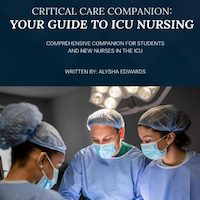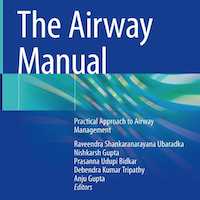Stories Category: Intensive Care

Predict Sepsis-Associated Vasopressor Use in the ICU
Domain adaptation improved performance of a model predicting sepsis-associated vasopressor use during external validation. 40 retrospectively collected features from the electronic medical records of adult ICU patients... read more
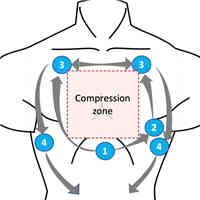
POCUS in Cardiorespiratory Arrest
The POCUS-CA (Point-of-care ultrasound in cardiac arrest) is a diagnostic tool in the Intensive Care Unit and Emergency Department setting. The literature indicates that in the patient in a cardiorespiratory arrest it... read more

miR-221-5p-Mediated Downregulation of JNK2 Aggravates ALI
Sepsis and acute lung injury (ALI) are linked to mitochondrial dysfunction; however, the underlying mechanism remains elusive. We previously reported that c-Jun N-terminal protein kinase 2 (JNK2) promotes stress-induced mitophagy... read more
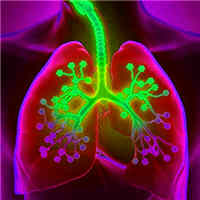
Noninvasive Ventilation and Outcomes in Bronchiolitis
In a large cohort of infants at children’s hospitals, noninvasive and invasive ventilation increased significantly from 2010 to 2018. Hospital-level noninvasive ventilation utilization was not associated with a reduction... read more

Identification of Biomarkers, New Treatments, and Vaccines for COVID-19
The novel coronavirus 2019 (COVID-19) has caused a serious global pandemic in just one year. Nearly every country and territory in the world has been affected by the virus. The virulence and infection rate of the virus are... read more

Burden of Post-Sepsis Morbidity Higher Than Previously Thought
A recent cohort study published in JAMA based on data from 116,507 survivors of hospital-treated sepsis in Germany sheds light on the heavy burden of long-term effects of sepsis, the most severe complication of infections. The... read more

Recovery, Rehabilitation and Follow-up Services After Critical Illness
Overall, these data demonstrate a proliferation of recovery, follow-up and rehabilitation services for critically ill adults in the past decade across the UK, although service gaps remain suggesting further work is required... read more
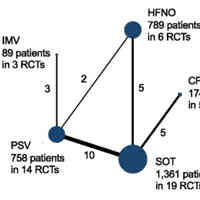
Non-invasive vs. Invasive Respiratory Management Strategies in AHRF Patients
When performing non-invasive ventilation among patients with de novo acute hypoxaemic respiratory failure (AHRF), it is important to avoid excessive tidal volume and lung injury. Although pressure support is needed for... read more
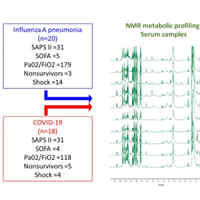
Metabolomic Diferences: COVID-19 vs. H1N1 Influenza in ARDS
This study aimed to compare the specificity of the metabolic alterations induced by COVID-19 or Influenza A pneumonia (IAP) in acute respiratory distress syndrome (ARDS). Our findings support the concept that ARDS is associated... read more
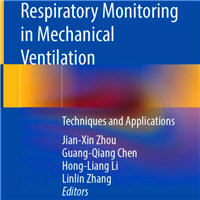
Respiratory Monitoring in Mechanical Ventilation: Techniques and Applications
This book covers the up-to-date advancement of respiratory monitoring in ventilation support as well as detecting the physiological responses to therapeutic interventions to avoid complications. Mechanical ventilation nowadays... read more
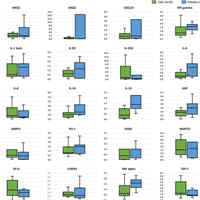
Safety and Efficacy of MUST-ARDS
This important first study, using multipotent adult progenitor cells in ARDS patients (MUST-ARDS), was a phase 1/2 randomised, blinded, placebo-controlled trial that demonstrated safety and tolerability of intravenous administration... read more
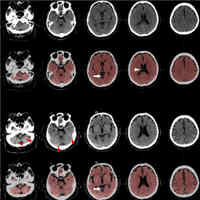
Rapidly Progressive Brain Atrophy in Septic ICU Patients
Many ICU patients with severe sepsis who developed prolonged mental status changes and neurological sequelae showed signs of brain atrophy. Patients with rapidly progressive brain atrophy were more likely to have required... read more

COVID-19 Infection Triggers Profibrotic Macrophage Responses and Lung Fibrosis
COVID-19-induced acute respiratory distress syndrome (ARDS) is associated with prolonged respiratory failure and high mortality, but the mechanistic basis of lung injury remains incompletely understood. Here, we analyzed... read more
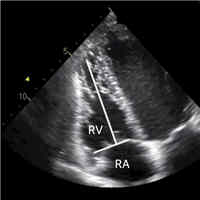
Semiquantitative Assessment of RFV with a Modified Subcostal Echocardiographic View
In patients presenting with RVF in the ICU (or in situations where the apical echocardiographic view is suboptimal for tricuspid annular assessment), SEATAK can be an alternative to TAPSE. Further research is needed to validate... read more
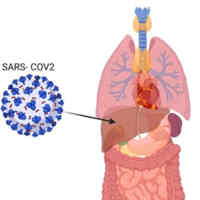
Prevalence of Hepatopancreatic Injury in Patients with COVID-19
COVID-19 can cause liver injury. Mortality, disease severity, and hospital length of stay are increased in COVID-19 patients with hepatopancreatic injury. Forty-five thousand three hundred sixty patients were included... read more
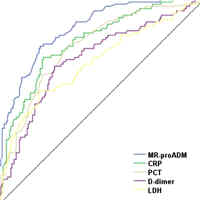
MR-proADM Role in the Stratification Risk of COVID-19 Patients Assessed at the Triage of the Emergency Department
During the severe acute respiratory syndrome coronavirus 2 (SARS-CoV-2) pandemic, the Emergency Departments have been overrun with suspicious COVID-19 patients, creating a pressing need to optimize resources through risk... read more

COVID-19 and Myocardial Infarction
COVID-19 is a risk factor for myocardial infarction and stroke through self-controlled case series evaluation, a method that has been used to establish the risk of myocardial infarction associated with influenza infection. Regarding... read more


